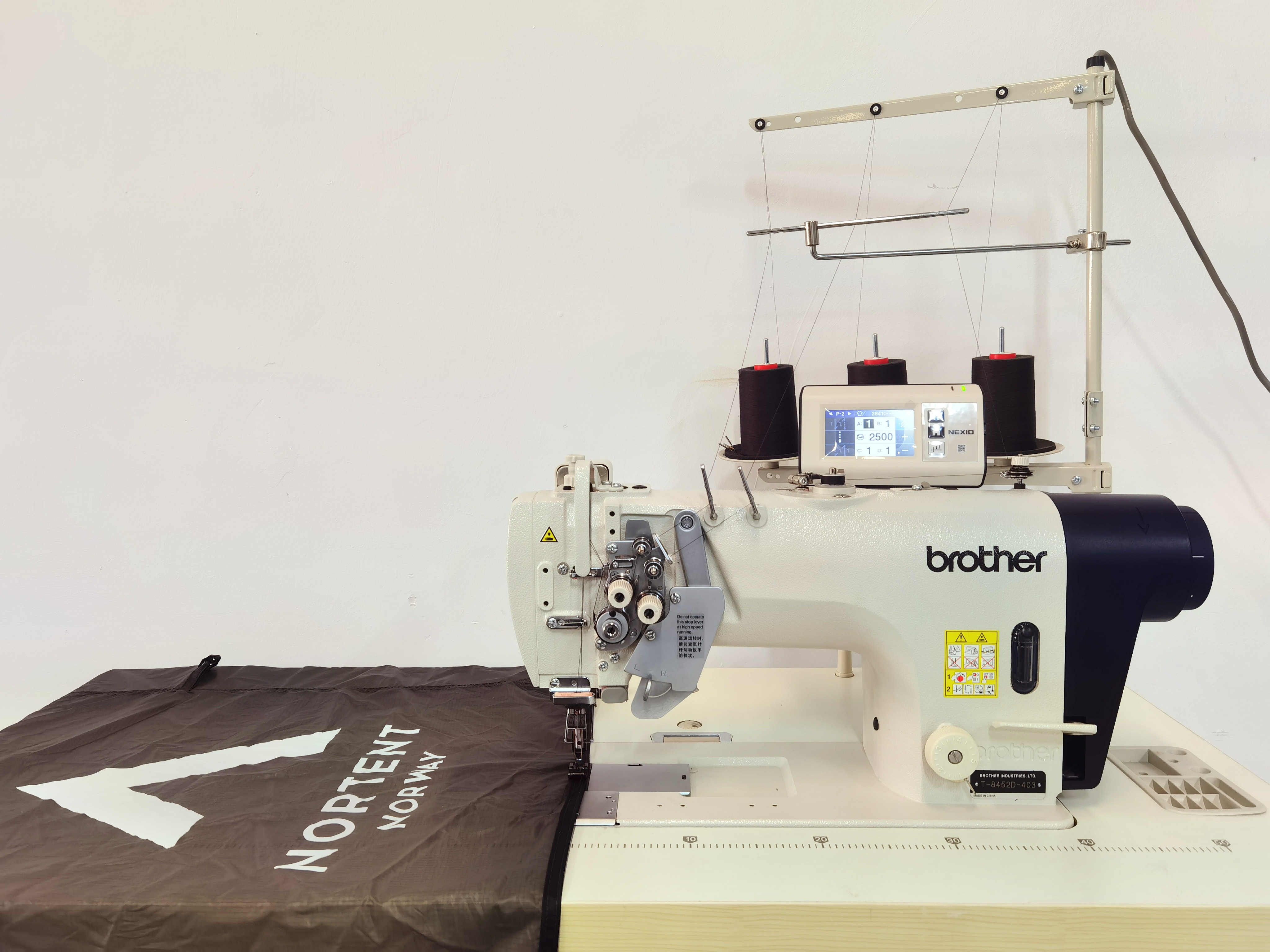Tråd og søm
Kvaliteten på stoffet er viktig når du skal velge riktig materiale og like viktig er sømmene som holder stoffet sammen. Den optimale tråden og syteknikken må brukes. Vi bruker "flate fell-sømmen", en syteknikk som gjør sømmene svært slitesterke. For å gi tråden et solid og grundig grep, brettes duken slik at sømmen består av fire lag med duk som hver tråd går gjennom og danner en søm.
Tråden vi bruker på sømmene er Amann Rasant 75 WR fra Tyskland. En av egenskapene til denne tråden er at den utvider seg når den blir våt (en ekspansjonstråd). Dette betyr at hullene i duken der tråden går igjennom, vil tettes ettersom tråden faktisk utvider seg og dekker mer av hullet og dermed gjør den mer vanntett. I tillegg bruker vi også en spesiell avkjølt nål i selve syprosessen. Dette lar oss minimere hullene forårsaket av nålen når vi syr. Dette gjelder spesielt silnylonstoffet som er svært elastisk og tåler betydelig strekk uten å bli skadet. Når det er sagt. Med strekkingen av dette stoffet vil nålehullene også strekke seg og bli mindre vanntette. Derfor synes vi det også er hensiktsmessig å forsegle sømmene på silnylonstoffet med en silikonblanding for å sikre at sømmene forblir 100 % vanntette. Silikonblandingen vil også trenge gjennom sømmen og styrke den.
Størrelsen på stingene er også nøye vurdert. Mange tror kanskje feilaktig at jo tettere stingene er, desto sterkere er sømmen. Dette er ikke riktig og det er viktig å finne riktig størrelse. Hvis stingene er for store, vil sømmene bli svake. Er stingene for små og tette blir det for mange nålehull, noe som vil svekke sømmene. Basert på våre funn ser vi at 10-12 sting innenfor en søm på 3 centimeter er optimalt. Det er her du får den mest gunstige sømmen.















